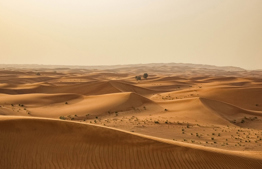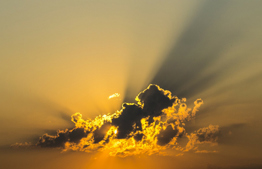Parashat Beshalach: The "Manna" of the Kohanim
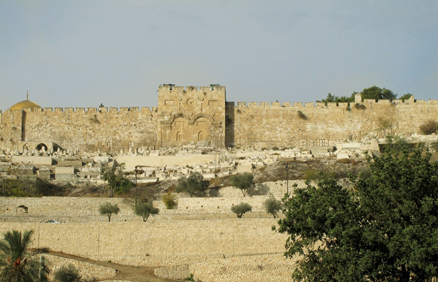
Eating manna as the ideal situation for learning Torah and its parallel in eating teruma. Also a visit to Sede Terumot, the link to King David's curse, and the obligation of the Beit She'an Valley in terumot and ma'aserot.
And the L-rd said to Moses, “I will rain down bread for you from the sky, and the people shall go out and gather each day that day’s portion—that I may thus test them, to see whether they will follow My instructions or not (Shemot 16:4).
From the phrase 'each day for that day's portion' Rabbi Shimon son of Yochai said: It is possible to study Torah only by those who ate manna. How so? One would sit and study and not know where he would get food and drink, or where he would get clothes and be able to cover himself – as we see, it is only possible to study Torah by those who eat manna, and these are two – [also] those who eat teruma (Mechilta Beshalach).
A wondrous era but not ideal
The period when the Jewish People ate manna is described in our annals as a wondrous era when our fate was clearly and completely in G-ds' hands. No one had to worry about pursuing a livelihood—and couldn't do so even if they wanted to. There were clear rules about how much manna to take and the Jewish People were supposed to abide by them. This was not simple and even negates basic human nature; the Israelites were expected to disconnect completely from the concern of putting bread on the table and simply rely on G-d—who would never let them down.
Reliance on manna: disconnection from materialism
Today we might long for this period, but without a doubt it was not ideal. Of course this is not the primary role of the Jewish People in the world. It was only a preparatory stage that we can remember fondly and gather strength from. The goal was to come to the Land of Israel and work its soil, looking back at our days in the desert, which remind us of the true Source of our sustenance. Our role is to demonstrate how it is possible to serve G-d and reveal Him from within the material—from the very soil itself.
Rabbi Shimon bar Yochai teaches us that while this situation is not the ideal for the Jews' ultimate role in the world, it is optimal for Torah study. If a person is engaged in Torah study all day long without having to lift a finger to pursue a livelihood—not due to laziness, but rather due to complete and total faith in G-d's promise to sustain us—these are the most optimal conditions to study Torah in. It is interesting to note that Rabbi Shimon stresses that one would "not know where he would get food and drink or where he would get clothes." That is, a situation of a wealthy individual who knows that his bank account is full and can study Torah in peace is not comparable to the situation of those eating manna. Precisely the knowledge that the cupboard is bare, and that desert conditions do not support any way of finding food for millions of Jews in the desert, is what cuts man off completely from materialistic concerns and allows him to immerse himself completely in Torah study and thus study it properly. There is no doubt that there is a connection between Rabbi Shimon's statement and the manner in which he studied Torah in a cave for 13 years (Shabbat 33b), surviving on carobs and spring water, and covering himself with sand. In this state he was completely free from any financial worries. In addition, Rabbi Shimon is known for his opinion that one should study Torah alone and not involve oneself with the pursuit of a livelihood (Berachot 35b).
Teruma is like manna
Although this era has since passed thousands of years ago, Rabbi Shimon teaches us that it is possible to find something similar today (or rather, in his day, 2nd century), when the kohanim would observe the laws of ritual purity and eat teruma, even after the Temple's destruction: "and those who eat teruma." Here, too, note that the emphasis is not on the fact the person—the kohen, in this case—receives his food from others. Were this the case, ma'aser rishon given to the levi'im is preferable, since much more produce is given. Ma'aser levi consists of nearly 10% of the produce, as opposed to the 2% given as teruma (depending on the extent of the field owner's generosity, from 1/40 – 1/60) and terumat ma'aser is even less than 1%! It seems that it is precisely the sanctity of the teruma (and not the ma'aser rishon, which has no sanctity and can be eaten by a levi or anyone else even when impure) that likens it to manna. Only kohanim may eat teruma and there are very strict regulations on making transactions with it, even among kohanim; it cannot be turned into a liquid (except wine and oil); and most exacting: it can only be eaten in a state of ritual purity (which is why it cannot be eaten today). The Kohen has no use for excess teruma, more than what he can eat in the short-term. In this way, it is certainly similar to manna.
Superfluous effort in pursuing a livelihood
The manna created a situation in which it was impossible to focus one's life around food. It didn't make a difference if people took more or less than what they needed—they would still be left with the same amount. There was no way to go elsewhere to find more of it, and the question of the distance from the place the manna fell from one's tent had nothing to do with the amount of searching in wanted ads, rather the extent that one finds favor in G-d's eyes.
People invest effort in the pursuit of a livelihood when they believe that more effort they invest, the more successful they will be. This isn't necessarily so; while sometimes their intense efforts bear fruit (or so it seems), this can cause people to revolve their life around the pursuit of a livelihood. A situation the likes of the desert, however, where human effort to achieve material gain has no effect whatsoever, makes involvement in this basic drive—the focal point of human beings and the entire animal kingdom—completely unnecessary. This forced the Israelites in the desert to find a different focal point for their existence: Torah study.
Teruma was given to kohanim by people, and to a certain extent the amount depended on their good will. Yet, since the owners couldn't benefit from it since eating teruma carries the death penalty, teruma was readily available. However, the many restrictions on using teruma—and even the fact that if he will be allowed to eat it or not often is not up to him (he might become defiled by someone or something else)—made it unnecessary to become involved in seeking it out as a means of livelihood. While the teruma food exists, it cannot become something it isn't; it cannot be used for business transactions or for anything else. Since there is not much for a kohen to do with the teruma, he need not work hard to find it. He receives exactly what he needs, no more and no less. This situation frees him to engage in Torah study. While not identical to the manna, it is certainly very similar ("these are two" as the Mechilta states) to eating manna.
Terumot and ma'aserot in Sede Terumot
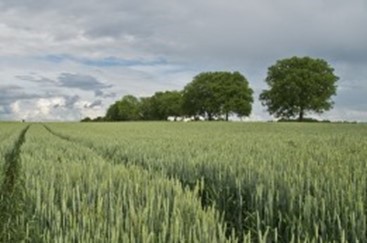
Sede Terumot
No dew and no rain
Kind David bemoans the death of King Saul and his sons, and expresses his great sorrow in the fall of the G-d's anointed, the first king of the Jewish people, and says: הרי בגלבוע אל טל ואל מטר עליכם ושדי תרומות, כי שם נגעל מגן גיבורים, מגן שאול בלי משוח בשמן "Oh hills of Gilboa— Let there be no dew or rain on you, or sede terumot, for there the shield of warriors lay rejected, the shield of Saul, polished with oil no more" (II Shmuel 1:21). The phrase sede terumot is generally explained as a curse, that rain would not fall there and thus fields wouldn't grow from which terumot would be taken. However, it could also be that the Gilboa was considered, to a certain extent, "a desert in the shadow of rain," that is, a place that receives little precipitation, despite the fact that it is not included among the world's desert belts (the Negev is), but in a place where precipitation is much more likely.
Indeed, the Gilboa is considered a relatively arid region. One cannot find large tracts of natural forests and shrubbery (and not only in light of destruction of natural forests, like in other places in Israel). The forests there were mostly planted, initially during the British Mandate. The names of many modern developments established, as well as mountains n the Gilboa and its environs are based on the names of King Saul and his descendants (and not only his sons—Kibbutz Merav can attest to this, Merav being Saul's oldest daughter), or on expressions from King David's lamentations (including Moshav Sede Terumot at the foot of Mt. Gilboa, and Moshav Magen Shaul).

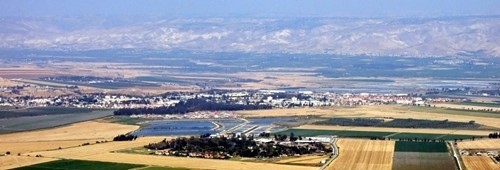
Beit She'an
Only Beit She'an or the Greater Beit She'an?
It is interesting that specifically with regard to Moshav (Sede Terumot, and its environs) the question arises: are these fields subject to terumot and ma'aserot? The question is as follows: was this region, which during David's time became an integral part of the Jewish kingdom (but was not conquered by Joshua – see Shoftim 1:27), also settled by those who returned to Zion in the early Second Temple times?. As we all know, the full obligation for the mitzvot tied to the Land of Israel applies only in the land settled also by olei Bavel, since the first sanctity of the land became nullified upon the First Temple's destruction. There are commentators on the Rambam who interpret that even places conquered by olei Mitzrayim but not settled by olei Bavel are subject to terumot and ma'aserot (Hilchot Terumot 1:5). It seems though, that Rav Yehuda HaNasi was lenient with regard to Beit She'an and exempted it altogether from terumot and ma'aserot (like other mixed cities, mentioned by the Sages) since it was not settled by Jews. The big question, then, is: does this leniency relate only to Beit She'an itself, or to the entire Beit She'an Valley, which includes the Moshav Sede Terumot.
An archeological answer?
An archeological finding linked to this question is an inscription discovered in Tel Rehov, some five kilometers south of Tel Beit She'an (between Kibbutz Ein HaNetziv and Moshav Rehov). This inscription (dated to the 5-7 century CE on a mosaic floor, discovered in 5733 - 1973) mentions a baraita that deals with matters related to the mitzvot tied to the Land of Israel, as well as the country's borders;. we are familiar with it from several Talmudic sources in various versions, while the version brought in the Sifri is closest. Among other things, the inscription mentions Beit She'an as one of the cities on the border of the Land of Israel. Does the fact that this inscription was found in the Beit She'an area and not in the city itself indicate that the exemption included Greater Beit She'an, and was not limited to the city? It is difficult to rely on this, since Rehov itself, for instance, is not mentioned there as a place with this exemption (although other smaller cities were listed as exempt although they were in close proximity to a larger city). Rabbi Rosenfeld, head of the hesder yeshiva in Shadmot Mehola, in his article in Techumin 13 (5753) writes that residents of Beit She'an Valley should take terumot and ma'aserot with a blessing. He bases this, among other sources, on the Chazon Ish, who states that this exemption was an innovation that related to Beit She'an alone. Employing the principle of tafasta merube lo tafasta (If you try to seize a lot, you may not seize anything)—despite the fact that the entire area is called the Beit She'an Valley, this is not a reason to exempt the entire area. In contrast, Rabbi Ehud Ahituv in a response asserts that even according to the Chazon Ish, who rules that one should separate terumot and ma'aserot in the Beit She'an Valley, his intent was not to obligate this separation with a blessing. Furthermore, Rabbi Zvi Yehuda HaKohen Kook relates the ruling of Rabbi Zvi Pesach Frank that the entire Beit She'an Valley is included in Rebbi's exemption, so terumot and ma'aserot should be separated there, but without a blessing.



